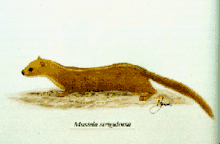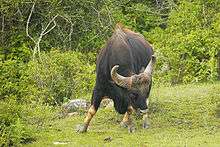List of mammals of Thailand
This is a list of the mammal species recorded in Thailand. There are 264 mammal species in Thailand, of which three are critically endangered, eleven are endangered, twenty-four are vulnerable, and two are near threatened. One of the species listed for Thailand is considered to be extinct.[1]
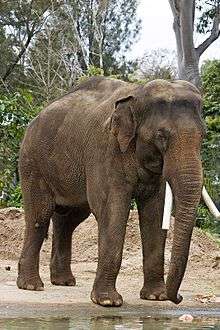
The following tags are used to highlight each species' conservation status as assessed by the International Union for Conservation of Nature:
| EX | Extinct | No reasonable doubt that the last individual has died. |
| EW | Extinct in the wild | Known only to survive in captivity or as a naturalized populations well outside its previous range. |
| CR | Critically endangered | The species is in imminent risk of extinction in the wild. |
| EN | Endangered | The species is facing an extremely high risk of extinction in the wild. |
| VU | Vulnerable | The species is facing a high risk of extinction in the wild. |
| NT | Near threatened | The species does not meet any of the criteria that would categorise it as risking extinction but it is likely to do so in the future. |
| LC | Least concern | There are no current identifiable risks to the species. |
| DD | Data deficient | There is inadequate information to make an assessment of the risks to this species. |
Some species were assessed using an earlier set of criteria. Species assessed using this system have the following instead of near threatened and least concern categories:
| LR/cd | Lower risk/conservation dependent | Species which were the focus of conservation programmes and may have moved into a higher risk category if that programme was discontinued. |
| LR/nt | Lower risk/near threatened | Species which are close to being classified as vulnerable but are not the subject of conservation programmes. |
| LR/lc | Lower risk/least concern | Species for which there are no identifiable risks. |
Subclass: Theria
Infraclass: Eutheria
Order: Proboscidea (elephants)
The elephants comprise three living species and are the largest living land animals.
- Family: Elephantidae (elephants)
- Genus: Elephas
- Species: Asian elephant, Elephas maximus EN
- Indian elephant, Elephas maximus indicus EN
- Species: Asian elephant, Elephas maximus EN
- Genus: Elephas
Order: Sirenia (manatees and dugongs)
Sirenia is an order of fully aquatic, herbivorous mammals that inhabit rivers, estuaries, coastal marine waters, swamps, and marine wetlands. All four species are endangered.
- Family: Dugongidae
Order: Scandentia (treeshrews)
The treeshrews are small mammals native to the tropical forests of Southeast Asia. Although called treeshrews, they are not true shrews and are not all arboreal.
- Family: Tupaiidae (tree shrews)
- Genus: Dendrogale
- Northern smooth-tailed tree shrew, Dendrogale murina LR/lc
- Genus: Tupaia
- Northern treeshrew, Tupaia belangeri LR/lc
- Common treeshrew, Tupaia glis LR/lc
- Pygmy tree shrew, Tupaia minor LR/lc
- Genus: Dendrogale
- Family: Ptilocercidae
- Genus: Ptilocercus
- Pen-tailed tree shrew, Ptilocercus lowii LR/lc
- Genus: Ptilocercus
Order: Dermoptera (colugos)
The two species of colugos make up the order Dermoptera. They are arboreal gliding mammals found in Southeast Asia.
- Family: Cynocephalidae (flying lemurs)
- Genus: Cynocephalus
- Sunda flying lemur, Cynocephalus variegatus LR/lc
- Genus: Cynocephalus
Order: Primates
The order Primates contains humans and their closest relatives: lemurs, lorisoids, monkeys, and apes.
- Suborder: Strepsirrhini
- Infraorder: Lemuriformes
- Superfamily: Lorisoidea
- Family: Lorisidae
- Genus: Nycticebus
- Bengal slow loris, Nycticebus bengalensis DD
- Sunda slow loris, Nycticebus coucang LR/lc
- Genus: Nycticebus
- Family: Lorisidae
- Superfamily: Lorisoidea
- Infraorder: Lemuriformes
- Suborder: Haplorhini
- Infraorder: Simiiformes
- Parvorder: Catarrhini
- Superfamily: Cercopithecoidea
- Family: Cercopithecidae (Old World monkeys)
- Subfamily: Cercopithecinae
- Genus: Macaca
- Stump-tailed macaque, Macaca arctoides VU
- Assam macaque, Macaca assamensis VU
- Crab-eating macaque, Macaca fascicularis LR/nt
- Northern pig-tailed macaque, Macaca leonina VU
- Rhesus macaque, Macaca mulatta LR/nt
- Southern pig-tailed macaque, Macaca nemestrina VU
- Genus: Macaca
- Subfamily: Colobinae
- Genus: Trachypithecus
- Germain's langur, Trachypithecus germaini EN
- Dusky leaf monkey, Trachypithecus obscurus LR/lc
- Griffith's silver langur, Trachypithecus villosus DD
- Genus: Presbytis
- Robinson's banded langur, Presbytis robinsoni LR/nt
- Genus: Trachypithecus
- Subfamily: Cercopithecinae
- Family: Cercopithecidae (Old World monkeys)
- Superfamily: Hominoidea
- Family: Hylobatidae (gibbons)
- Genus: Hylobates
- Agile gibbon, Hylobates agilis LR/nt
- Lar gibbon, Hylobates lar LR/nt
- Pileated gibbon, Hylobates pileatus VU
- Genus: Hylobates
- Family: Hylobatidae (gibbons)
- Superfamily: Cercopithecoidea
- Parvorder: Catarrhini
- Infraorder: Simiiformes
Order: Rodentia (rodents)
Rodents make up the largest order of mammals, with over 40% of mammalian species. They have two incisors in the upper and lower jaw which grow continually and must be kept short by gnawing. Most rodents are small though the capybara can weigh up to 45 kg (99 lb).
Forest species include Rattus tiomanicus, Rattus andamanensis, Sundamys muelleri, Leopoldamys edwardsi, Leopoldamys sabanus, Niviventer fulvescens, and Maxomys surifer. Species commonly found in agricultural areas include Bandicota indica, Bandicota savilei, Rattus argentiventer, Rattus losea sakeratensis, Rattus nitidus, Rattus tanezumi, and Rattus tiomanicus. Niviventer hinpoon and Leopoldamys neilli are endangered species with fragmented geographical distributions that are restricted to limestone karst habitats.[2]
- Suborder: Hystricognathi
- Family: Hystricidae (Old World porcupines)
- Genus: Atherurus
- Asiatic brush-tailed porcupine, Atherurus macrourus LR/lc
- Genus: Hystrix
- Malayan porcupine, Hystrix brachyura VU
- Genus: Atherurus
- Family: Hystricidae (Old World porcupines)
- Suborder: Sciurognathi
- Family: Sciuridae (squirrels)
- Subfamily: Ratufinae
- Genus: Ratufa
- Cream-coloured giant squirrel, Ratufa affinis LR/lc
- Black giant squirrel, Ratufa bicolor LR/lc
- Genus: Ratufa
- Subfamily: Sciurinae
- Tribe: Pteromyini
- Genus: Belomys
- Hairy-footed flying squirrel, Belomys pearsonii LR/nt
- Genus: Hylopetes
- Particolored flying squirrel, Hylopetes alboniger EN
- Gray-cheeked flying squirrel, Hylopetes lepidus LR/lc
- Indochinese flying squirrel, Hylopetes phayrei LR/lc
- Red-cheeked flying squirrel, Hylopetes spadiceus LR/lc
- Genus: Petaurista
- Red giant flying squirrel, Petaurista petaurista LR/lc
- Indian giant flying squirrel, Petaurista philippensis LR/lc
- Genus: Petinomys
- Temminck's flying squirrel, Petinomys setosus LR/lc
- Genus: Pteromyscus
- Smoky flying squirrel, Pteromyscus pulverulentus LR/nt
- Genus: Belomys
- Tribe: Pteromyini
- Subfamily: Callosciurinae
- Genus: Callosciurus
- Gray-bellied squirrel, Callosciurus caniceps LR/lc
- Pallas's squirrel, Callosciurus erythraeus LR/lc
- Finlayson's squirrel, Callosciurus finlaysonii LR/lc
- Black-striped squirrel, Callosciurus nigrovittatus LR/lc
- Plantain squirrel, Callosciurus notatus LR/lc
- Prevost's squirrel, Callosciurus prevostii LR/lc
- Genus: Dremomys
- Asian red-cheeked squirrel, Dremomys rufigenis LR/lc
- Genus: Lariscus
- Three-striped ground squirrel, Lariscus insignis LR/lc
- Genus: Menetes
- Berdmore's ground squirrel, Menetes berdmorei LR/lc
- Genus: Rhinosciurus
- Shrew-faced squirrel, Rhinosciurus laticaudatus LR/lc
- Genus: Sundasciurus
- Horse-tailed squirrel, Sundasciurus hippurus LR/lc
- Low's squirrel, Sundasciurus lowii LR/lc
- Slender squirrel, Sundasciurus tenuis LR/lc
- Genus: Tamiops
- Himalayan striped squirrel, Tamiops macclellandi LR/lc
- Cambodian striped squirrel, Tamiops rodolphei LR/lc
- Genus: Callosciurus
- Subfamily: Ratufinae
- Family: Spalacidae
- Subfamily: Rhizomyinae
- Genus: Cannomys
- Lesser bamboo rat, Cannomys badius LR/lc
- Genus: Rhizomys
- Hoary bamboo rat, Rhizomys pruinosus LR/lc
- Large bamboo rat, Rhizomys sumatrensis LR/lc
- Genus: Cannomys
- Subfamily: Rhizomyinae
- Family: Cricetidae
- Subfamily: Arvicolinae
- Genus: Eothenomys
- Père David's vole, Eothenomys melanogaster LR/lc
- Genus: Eothenomys
- Subfamily: Arvicolinae
- Family: Muridae (mice, rats, voles, gerbils, hamsters, etc.)
- Subfamily: Murinae
- Genus: Bandicota
- Greater bandicoot rat, Bandicota indica LR/lc
- Savile's bandicoot rat, Bandicota savilei LR/lc
- Genus: Berylmys
- Small white-toothed rat, Berylmys berdmorei LR/lc
- Bower's white-toothed rat, Berylmys bowersi LR/lc
- Genus: Chiromyscus
- Fea's tree rat, Chiromyscus chiropus LR/lc
- Genus: Chiropodomys
- Pencil-tailed tree mouse, Chiropodomys gliroides LR/lc
- Genus: Hapalomys
- Marmoset rat, Hapalomys longicaudatus LR/nt
- Genus: Leopoldamys
- Edwards's long-tailed giant rat, Leopoldamys edwardsi LR/lc
- Neill's long-tailed giant rat, Leopoldamys neilli EN
- Long-tailed giant rat, Leopoldamys sabanus LR/lc
- Genus: Maxomys
- Rajah spiny rat, Maxomys rajah LR/lc
- Red spiny rat, Maxomys surifer LR/lc
- Whitehead's spiny rat, Maxomys whiteheadi LR/lc
- Genus: Mus
- Ryukyu mouse, Mus caroli LR/lc
- Fawn-colored mouse, Mus cervicolor LR/lc
- Cook's mouse, Mus cookii LR/lc
- Gairdner's shrewmouse, Mus pahari LR/lc
- Shortridge's mouse, Mus shortridgei LR/lc
- Genus: Niviventer
- Chinese white-bellied rat, Niviventer confucianus LR/lc
- Dark-tailed tree rat, Niviventer cremoriventer LR/lc
- Chestnut white-bellied rat, Niviventer fulvescens LR/lc
- Limestone rat, Niviventer hinpoon LR/nt
- Lang Bian white-bellied rat, Niviventer langbianis LR/lc
- Genus: Rattus
- Ricefield rat, Rattus argentiventer LR/lc
- Polynesian rat, Rattus exulans LR/lc
- Lesser ricefield rat, Rattus losea LR/lc
- Himalayan field rat, Rattus nitidus LR/lc
- Sikkim rat, Rattus sikkimensis VU
- Tanezumi rat, Rattus tanezumi LR/lc
- Malayan field rat, Rattus tiomanicus LR/lc
- Genus: Sundamys
- Müller's giant Sunda rat, Sundamys muelleri LR/lc
- Genus: Vandeleuria
- Asiatic long-tailed climbing mouse, Vandeleuria oleracea LR/lc
- Genus: Bandicota
- Subfamily: Murinae
- Family: Sciuridae (squirrels)
Order: Lagomorpha (lagomorphs)
The lagomorphs comprise two families, Leporidae (hares and rabbits), and Ochotonidae (pikas). Though they can resemble rodents, and were classified as a superfamily in that order until the early 20th century, they have since been considered a separate order. They differ from rodents in a number of physical characteristics, such as having four incisors in the upper jaw rather than two.
- Family: Leporidae (rabbits, hares)
- Genus: Lepus
- Burmese hare, Lepus peguensis LR/lc
- Genus: Lepus
Order: Eulipotyphla (shrews, hedgehogs, gymnures, moles and solenodons)
Eulipotyphlans are insectivorous mammals. Shrews and solenodons resemble mice, hedgehogs carry spines, gymnures look more like large rats, while moles are stout-bodied burrowers.
- Family: Erinaceidae (hedgehogs and gymnures)
- Subfamily: Galericinae
- Genus: Echinosorex
- Gymnure, Echinosorex gymnura LR/lc
- Genus: Hylomys
- Short-tailed gymnure, Hylomys suillus LR/lc
- Genus: Echinosorex
- Subfamily: Galericinae
- Family: Soricidae (shrews)
- Subfamily: Crocidurinae
- Genus: Crocidura
- Grey shrew, Crocidura attenuata LR/lc
- Southeast Asian shrew, Crocidura fuliginosa LR/lc
- Horsfield's shrew, Crocidura horsfieldii LR/lc
- Taiga shrew, Crocidura pullata LR/lc
- Genus: Suncus
- Etruscan shrew, Suncus etruscus LC
- Malayan pygmy shrew, Suncus malayanus DD
- Genus: Crocidura
- Subfamily: Soricinae
- Tribe: Anourosoricini
- Genus: Anourosorex
- Mole shrew, Anourosorex squamipes LR/lc
- Genus: Anourosorex
- Tribe: Nectogalini
- Genus: Soriculus
- Lowe's shrew, Soriculus parca LR/lc
- Genus: Soriculus
- Tribe: Anourosoricini
- Subfamily: Crocidurinae
- Family: Talpidae (moles)
- Subfamily: Talpinae
- Tribe: Talpini
- Genus: Euroscaptor
- Kloss's mole, Euroscaptor klossi LR/lc
- Himalayan mole, Euroscaptor micrura LR/lc
- Genus: Euroscaptor
- Tribe: Talpini
- Subfamily: Talpinae
Order: Chiroptera (bats)
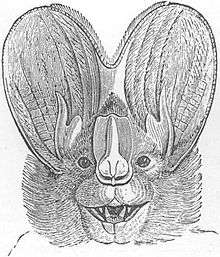
The bats' most distinguishing feature is that their forelimbs are developed as wings, making them the only mammals capable of flight. Bat species account for about 20% of all mammals.
- Family: Pteropodidae (flying foxes, Old World fruit bats)
- Subfamily: Pteropodinae
- Genus: Balionycteris
- Spotted-winged fruit bat, Balionycteris maculata LR/lc
- Genus: Chironax
- Black-capped fruit bat, Chironax melanocephalus LR/lc
- Genus: Cynopterus
- Lesser short-nosed fruit bat, Cynopterus brachyotis LR/lc
- Horsfield's fruit bat, Cynopterus horsfieldi LR/lc
- Greater short-nosed fruit bat, Cynopterus sphinx LR/lc
- Genus: Megaerops
- Tailless fruit bat, Megaerops ecaudatus LR/lc
- Ratanaworabhan's fruit bat, Megaerops niphanae LR/lc
- Genus: Pteropus
- Small flying-fox, Pteropus hypomelanus LR/lc
- Lyle's flying fox, Pteropus lylei LR/lc
- Large flying fox, Pteropus vampyrus LR/lc
- Genus: Rousettus
- Geoffroy's rousette, Rousettus amplexicaudatus LR/lc
- Genus: Sphaerias
- Blanford's fruit bat, Sphaerias blanfordi LR/lc
- Genus: Balionycteris
- Subfamily: Macroglossinae
- Genus: Eonycteris
- Lesser dawn bat, Eonycteris spelaea LR/lc
- Genus: Macroglossus
- Long-tongued nectar bat, Macroglossus minimus LR/lc
- Long-tongued fruit bat, Macroglossus sobrinus LR/lc
- Genus: Eonycteris
- Subfamily: Pteropodinae
- Family: Vespertilionidae
- Subfamily: Kerivoulinae
- Genus: Kerivoula
- Hardwicke's woolly bat, Kerivoula hardwickii LR/lc
- Least woolly bat, Kerivoula minuta LR/nt
- Whitehead's woolly bat, Kerivoula whiteheadi LR/lc
- Genus: Phoniscus
- Groove-toothed bat, Phoniscus atrox LR/lc
- Genus: Kerivoula
- Subfamily: Myotinae
- Genus: Myotis
- Szechwan myotis, Myotis altarium LR/lc
- Hairy-faced bat, Myotis annectans LR/nt
- Large myotis, Myotis chinensis LR/lc
- Lesser large-footed bat, Myotis hasseltii LR/lc
- Horsfield's bat, Myotis horsfieldii LR/lc
- Burmese whiskered bat, Myotis montivagus LR/nt
- Whiskered myotis, Myotis muricola LR/lc
- Thick-thumbed myotis, Myotis rosseti LR/nt
- Genus: Myotis
- Subfamily: Vespertilioninae
- Genus: Arielulus
- Collared pipistrelle, Arielulus aureocollaris DD
- Genus: Eptesicus
- Surat serotine, Eptesicus dimissus VU
- Thick-eared bat, Eptesicus pachyotis LR/nt
- Serotine bat, Eptesicus serotinus LR/lc
- Genus: Glischropus
- Common thick-thumbed bat, Glischropus tylopus LR/lc
- Genus: Hesperoptenus
- Blanford's bat, Hesperoptenus blanfordi LR/lc
- Tickell's bat, Hesperoptenus tickelli LR/lc
- Genus: Hypsugo
- Cadorna's pipistrelle, Hypsugo cadornae LR/nt
- Burma pipistrelle, Hypsugo lophurus DD
- Chinese pipistrelle, Hypsugo pulveratus LR/nt
- Genus: Ia
- Great evening bat, Ia io LR/nt
- Genus: Pipistrellus
- Indian pipistrelle, Pipistrellus coromandra LR/lc
- Java pipistrelle, Pipistrellus javanicus LR/lc
- Mount Popa pipistrelle, Pipistrellus paterculus LR/nt
- Genus: Scotomanes
- Harlequin bat, Scotomanes ornatus LR/nt
- Genus: Tylonycteris
- Greater bamboo bat, Tylonycteris robustula LR/lc
- Genus: Arielulus
- Subfamily: Murininae
- Genus: Harpiocephalus
- Greater hairy-winged bat, Harpiocephalus mordax LR/nt
- Genus: Murina
- Hutton's tube-nosed bat, Murina huttoni LR/nt
- Scully's tube-nosed bat, Murina tubinaris LR/lc
- Genus: Harpiocephalus
- Subfamily: Miniopterinae
- Genus: Miniopterus
- Western bent-winged bat, Miniopterus magnater LR/lc
- Intermediate long-fingered bat, Miniopterus medius LR/lc
- Small bent-winged bat, Miniopterus pusillus LR/lc
- Schreibers' long-fingered bat, Miniopterus schreibersii LC
- Genus: Miniopterus
- Subfamily: Kerivoulinae
- Family: Rhinopomatidae
- Genus: Rhinopoma
- Lesser mouse-tailed bat, Rhinopoma hardwickei LC
- Greater mouse-tailed bat, Rhinopoma microphyllum LC
- Genus: Rhinopoma
- Family: Craseonycteridae
- Genus: Craseonycteris
- Bumblebee bat, Craseonycteris thonglongyai EN
- Genus: Craseonycteris
- Family: Molossidae
- Genus: Chaerephon
- Wrinkle-lipped free-tailed bat, Chaerephon plicata LR/lc
- Genus: Tadarida
- La Touche's free-tailed bat, Tadarida latouchei DD
- Genus: Chaerephon
- Family: Emballonuridae
- Genus: Emballonura
- Lesser sheath-tailed bat, Emballonura monticola LR/lc
- Genus: Saccolaimus
- Naked-rumped pouched bat, Saccolaimus saccolaimus LR/lc
- Genus: Taphozous
- Long-winged tomb bat, Taphozous longimanus LR/lc
- Black-bearded tomb bat, Taphozous melanopogon LR/lc
- Theobald's tomb bat, Taphozous theobaldi LR/lc
- Genus: Emballonura
- Family: Nycteridae
- Genus: Nycteris
- Malayan slit-faced bat, Nycteris tragata LR/lc
- Genus: Nycteris
- Family: Megadermatidae
- Genus: Megaderma
- Greater false vampire bat, Megaderma lyra LR/lc
- Lesser false vampire bat, Megaderma spasma LR/lc
- Genus: Megaderma
- Family: Rhinolophidae
- Subfamily: Rhinolophinae
- Genus: Rhinolophus
- Acuminate horseshoe bat, Rhinolophus acuminatus LR/lc
- Intermediate horseshoe bat, Rhinolophus affinis LR/lc
- Croslet horseshoe bat, Rhinolophus coelophyllus LR/lc
- Blyth's horseshoe bat, Rhinolophus lepidus LR/lc
- Woolly horseshoe bat, Rhinolophus luctus LR/lc
- Big-eared horseshoe bat, Rhinolophus macrotis LR/lc
- Malayan horseshoe bat, Rhinolophus malayanus LR/lc
- Marshall's horseshoe bat, Rhinolophus marshalli LR/nt
- Smaller horseshoe bat, Rhinolophus megaphyllus LR/lc
- Bourret's horseshoe bat, Rhinolophus paradoxolophus VU
- Pearson's horseshoe bat, Rhinolophus pearsoni LR/lc
- Least horseshoe bat, Rhinolophus pusillus LR/lc
- Shamel's horseshoe bat, Rhinolophus shameli LR/nt
- Lesser brown horseshoe bat, Rhinolophus stheno LR/lc
- Thomas's horseshoe bat, Rhinolophus thomasi LR/nt
- Trefoil horseshoe bat, Rhinolophus trifoliatus LR/lc
- Dobson's horseshoe bat, Rhinolophus yunanensis LR/nt
- Genus: Rhinolophus
- Subfamily: Hipposiderinae
- Genus: Aselliscus
- Stoliczka's trident bat, Aselliscus stoliczkanus LR/lc
- Genus: Hipposideros
- Great roundleaf bat, Hipposideros armiger LR/lc
- Dusky roundleaf bat, Hipposideros ater LR/lc
- Bicolored roundleaf bat, Hipposideros bicolor LR/lc
- Ashy roundleaf bat, Hipposideros cineraceus LR/lc
- Diadem roundleaf bat, Hipposideros diadema LR/lc
- Fulvus roundleaf bat, Hipposideros fulvus LR/lc
- Cantor's roundleaf bat, Hipposideros galeritus LR/lc
- Thailand roundleaf bat, Hipposideros halophyllus LR/nt
- Intermediate roundleaf bat, Hipposideros larvatus LR/lc
- Large Asian roundleaf bat, Hipposideros lekaguli LR/nt
- Shield-faced roundleaf bat, Hipposideros lylei LR/nt
- Pomona roundleaf bat, Hipposideros pomona LR/lc
- Pratt's roundleaf bat, Hipposideros pratti LR/nt
- Lesser great leaf-nosed bat, Hipposideros turpis EN
- Genus: Aselliscus
- Subfamily: Rhinolophinae
Order: Pholidota (pangolins)
The order Pholidota comprises the eight species of pangolin. Pangolins are anteaters and have the powerful claws, elongated snout and long tongue seen in the other unrelated anteater species.
- Family: Manidae
- Genus: Manis
- Sunda pangolin, Manis javanica CR
- Chinese pangolin, Manis pentadactyla CR
- Genus: Manis
Order: Cetacea (whales)
The order Cetacea includes whales, dolphins and porpoises. They are the mammals most fully adapted to aquatic life with a spindle-shaped nearly hairless body, protected by a thick layer of blubber, and forelimbs and tail modified to provide propulsion underwater.
- Suborder: Mysticeti
- Family: Balaenopteridae
- Subfamily: Balaenopterinae
- Genus: Balaenoptera
- Minke whale, Balaenoptera acutorostrata LR/nt
- Sei whale, Balaenoptera borealis EN
- Fin whale, Balaenoptera physalus EN
- Blue whale, Balaenoptera musculus EN[3]
- Bryde's whale, Balaenoptera edeni/brydei DD
- Omura's whale, Balaenoptera omurai DD
- Genus: Megaptera
- Humpback whale, Megaptera novaeangliae LC[4]
- Genus: Balaenoptera
- Subfamily: Balaenopterinae
- Family: Balaenopteridae
- Suborder: Odontoceti
- Superfamily: Platanistoidea
- Family: Phocoenidae
- Genus: Neophocaena
- Finless porpoise, Neophocaena phocaenoides DD
- Genus: Neophocaena
- Family: Physeteridae
- Genus: Physeter
- Sperm whale, Physeter macrocephalus VU
- Genus: Physeter
- Family: Delphinidae (marine dolphins)
- Genus: Steno
- Rough-toothed dolphin, Steno bredanensis DD
- Genus: Sousa
- Indo-Pacific humpback dolphin, Sousa chinensis DD
- Genus: Tursiops
- Bottlenose dolphin, Tursiops aduncus DD
- Bottlenose dolphin, Tursiops truncatus DD
- Genus: Stenella
- Pantropical spotted dolphin, Stenella attenuata LR/cd
- Spinner dolphin, Stenella longirostris LR/cd
- Genus: Lagenodelphis
- Fraser's dolphin, Lagenodelphis hosei DD
- Genus: Grampus
- Risso's dolphin, Grampus griseus DD
- Genus: Feresa
- Pygmy killer whale, Feresa attenuata DD
- Genus: Orcaella
- Irrawaddy dolphin, Orcaella brevirostris DD
- Genus: Orcinus
- Killer whale, Orcinus orca DD[5]
- Genus: Steno
- Family: Phocoenidae
- Superfamily: Platanistoidea
Order: Carnivora (carnivorans)
There are over 260 species of carnivorans, the majority of which feed primarily on meat. They have a characteristic skull shape and dentition.
- Suborder: Feliformia
- Family: Felidae (cats)
- Subfamily: Felinae
- Genus: Catopuma
- Asian golden cat, Catopuma temminckii VU
- Genus: Felis
- Jungle cat, Felis chaus LC
- Genus: Pardofelis
- Marbled cat, Pardofelis marmorata VU
- Genus: Prionailurus
- Leopard cat, Prionailurus bengalensis LC
- Flat-headed cat, Prionailurus planiceps VU
- Fishing cat, Prionailurus viverrinus VU
- Genus: Catopuma
- Subfamily: Pantherinae
- Genus: Neofelis
- Clouded leopard, Neofelis nebulosa VU
- Genus: Panthera
- Indochinese leopard, Panthera pardus delacouri CR[6]
- Indochinese tiger, Panthera tigris corbetti EN
- Malayan tiger, Panthera tigris jacksoni En
- Genus: Neofelis
- Subfamily: Felinae
- Family: Viverridae (civets, mongooses, etc.)
- Subfamily: Paradoxurinae
- Genus: Arctictis
- Binturong, Arctictis binturong LR/lc
- Genus: Arctogalidia
- Small-toothed palm civet, Arctogalidia trivirgata LR/lc
- Genus: Paguma
- Masked palm civet, Paguma larvata LR/lc
- Genus: Paradoxurus
- Asian palm civet, Paradoxurus hermaphroditus LR/lc
- Genus: Arctictis
- Subfamily: Hemigalinae
- Genus: Cynogale
- Otter civet, Cynogale bennettii EN
- Genus: Hemigalus
- Banded palm civet, Hemigalus derbyanus LR/lc
- Genus: Cynogale
- Subfamily: Prionodontinae
- Genus: Prionodon
- Banded linsang, Prionodon linsang LR/lc
- Spotted linsang, Prionodon pardicolor LR/lc
- Genus: Prionodon
- Subfamily: Viverrinae
- Genus: Viverra
- Large-spotted civet, Viverra megaspila LR/lc
- Malayan civet, Viverra tangalunga LR/lc
- Large Indian civet, Viverra zibetha LR/lc
- Genus: Viverricula
- Small Indian civet, Viverricula indica LR/lc
- Genus: Viverra
- Subfamily: Paradoxurinae
- Family: Herpestidae (mongooses)
- Genus: Herpestes
- Small Asian mongoose, Herpestes javanicus LR/lc
- Crab-eating mongoose, Herpestes urva LR/lc
- Genus: Herpestes
- Family: Felidae (cats)
- Suborder: Caniformia
- Family: Canidae (dogs, foxes)
- Genus: Canis
- Siamese jackal, Canis aureus cruesemanni LC
- Genus: Cuon
- Ussuri dhole, Cuon alpinus alpinus EN
- Genus: Canis
- Family: Ursidae (bears)
- Family: Mustelidae (mustelids)
- Genus: Mustela
- Yellow-bellied weasel, Mustela kathiah LR/lc
- Malayan weasel, Mustela nudipes LR/lc
- Siberian weasel, Mustela sibirica LR/lc
- Back-striped weasel, Mustela strigidorsa VU
- Genus: Martes
- Yellow-throated marten, Martes flavigula LR/lc
- Genus: Arctonyx
- Hog badger, Arctonyx collaris LR/lc
- Genus: Melogale
- Burmese ferret-badger, Melogale personata LR/lc
- Genus: Lutra
- European otter, Lutra lutra NT
- Hairy-nosed otter, Lutra sumatrana DD
- Genus: Lutrogale
- Smooth-coated otter, Lutrogale perspicillata VU
- Genus: Aonyx
- Oriental small-clawed otter, Aonyx cinereus NT
- Genus: Mustela
- Family: Canidae (dogs, foxes)
Order: Perissodactyla (odd-toed ungulates)
The odd-toed ungulates are browsing and grazing mammals. They are usually large to very large, and have relatively simple stomachs and a large middle toe.
- Family: Tapiridae (tapirs)
- Genus: Tapirus
- Malayan tapir, Tapirus indicus VU
- Genus: Tapirus
- Family: Rhinocerotidae
- Genus: Rhinoceros
- Vietnamese Sunda rhinoceros, Rhinoceros sondaicus annamiticus EX
- Genus: Dicerorhinus
- Western Sumatran rhinoceros, Dicerorhinus sumatrensis sumatrensis EX
- Genus: Rhinoceros
Order: Artiodactyla (even-toed ungulates)
The even-toed ungulates are ungulates whose weight is borne about equally by the third and fourth toes, rather than mostly or entirely by the third as in perissodactyls. There are about 220 artiodactyl species, including many that are of great economic importance to humans.
- Family: Suidae (pigs)
- Family: Tragulidae
- Genus: Tragulus
- Lesser mouse deer, Tragulus javanicus LR/lc
- Napu, Tragulus napu LR/lc
- Genus: Tragulus
- Family: Cervidae (deer)
- Subfamily: Cervinae
- Genus: Cervus
- Eld's deer, Cervus eldii VU
- Schomburgk's deer, Cervus schomburgki EX
- Sambar deer, Cervus unicolor LR/lc
- Genus: Cervus
- Subfamily: Muntiacinae
- Genus: Muntiacus
- Fea's muntjac, Muntiacus feae DD
- Indian muntjac, Muntiacus muntjak LR/lc
- Genus: Muntiacus
- Subfamily: Cervinae
- Family: Bovidae (cattle, antelope, sheep, goats)
- Subfamily: Bovinae
- Subfamily: Caprinae
- Genus: Capricornis
- Mainland serow, Capricornis milneedwardsii VU
- Genus: Nemorhaedus
- Chinese goral, Nemorhaedus caudatus VU
- Genus: Capricornis
Notes
- This list is derived from the IUCN Red List which lists species of mammals and includes those mammals that have recently been classified as extinct (since 1500 AD). The taxonomy and naming of the individual species is based on those used in existing Wikipedia articles as of 21 May 2007 and supplemented by the common names and taxonomy from the IUCN, Smithsonian Institution, or University of Michigan where no Wikipedia article was available.
- Latinne, Alice; Waengsothorn, Surachit; Rojanadilok, Prateep; Eiamampai, Krairat; Sribuarod, Kriangsak; Michaux, Johan R. (2013). "Diversity and endemism of Murinae rodents in Thai limestone karsts". Systematics and Biodiversity. 11 (3): 323–44. doi:10.1080/14772000.2013.818587.
- 2013. Trapped blue whale in Trang swims free
- ปลาวาฬหลังค่อม
- Breaking News: Killer Whale spotted off Phuket beach
- Rostro-García, S.; Kamler, J.F.; Ash, E.; Clements, G.R.; Gibson, L.; Lynam, A.J.; McEwing, R.; Naing, H.; Paglia, S. (2016). "Endangered leopards: Range collapse of the Indochinese leopard (Panthera pardus delacouri) in Southeast Asia". Biological Conservation. 201: 293–300. doi:10.1016/j.biocon.2016.07.001.
References
- "The IUCN Red List of Threatened Species: Mammals of Thailand". IUCN. 2001. Retrieved 22 May 2007.
- "Mammal Species of the World". Smithsonian National Museum of Natural History. 2005. Archived from the original on 27 April 2007. Retrieved 22 May 2007.
- "Animal Diversity Web". University of Michigan Museum of Zoology. 1995–2006. Retrieved 22 May 2007.
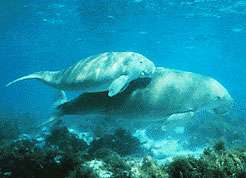

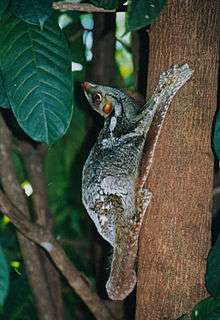
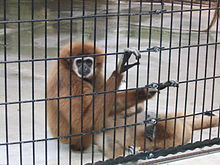
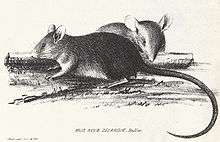

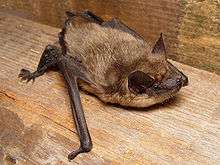
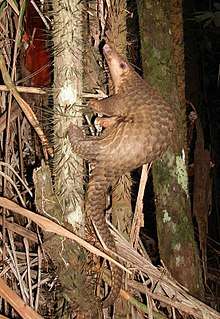
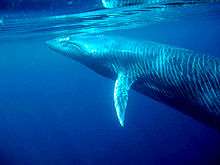
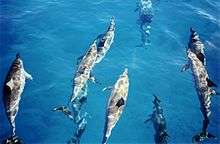
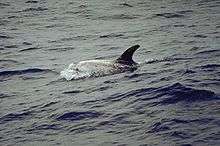
_832-714-(118).jpg)
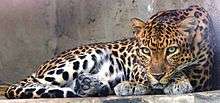
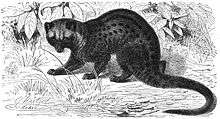
.jpg)
